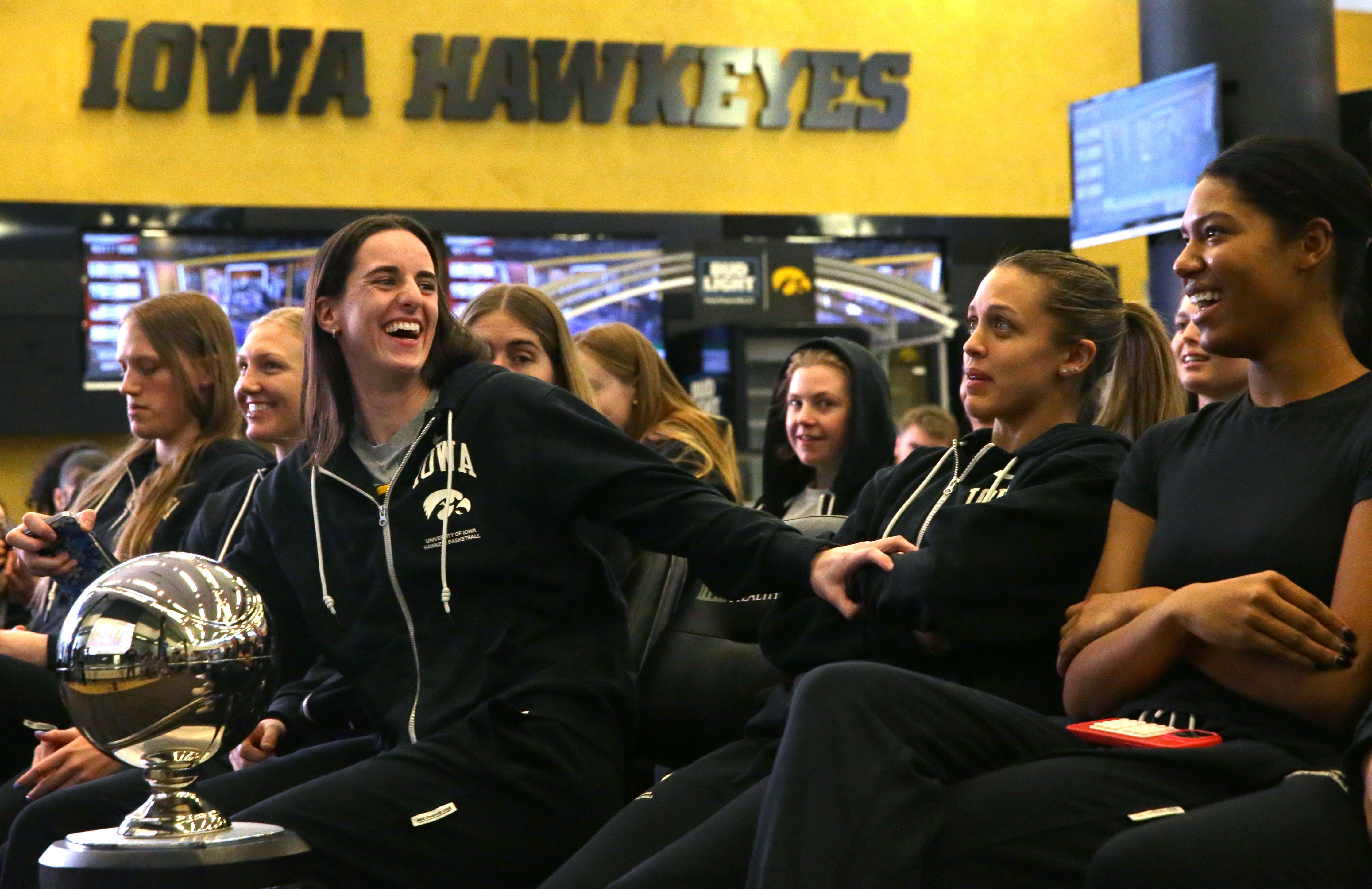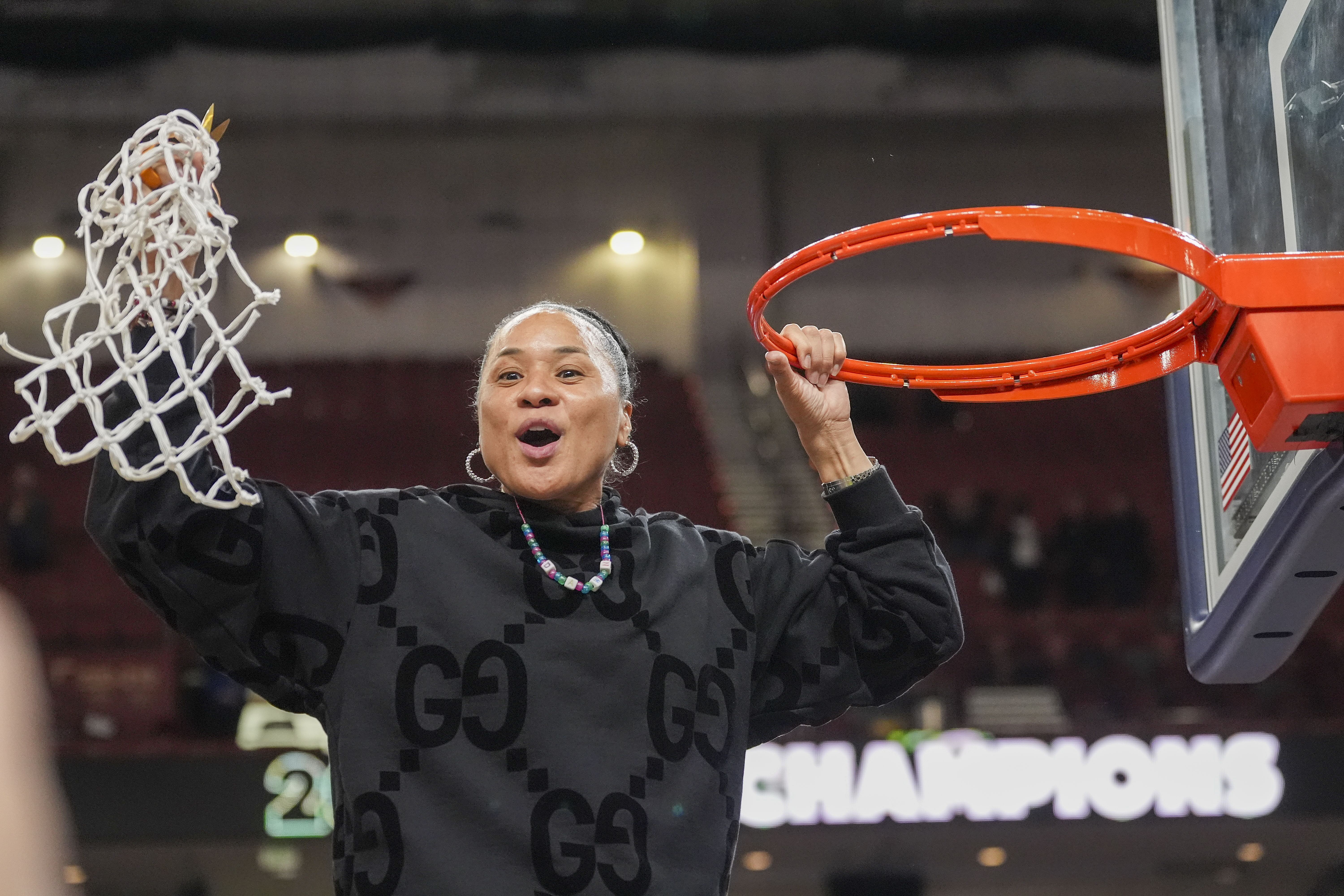March Madness Bracket 2024: NCAA Women’s Tournament Is Primed for Drama
There was no question about the No. 1 overall seed for the women’s tournament. (Who else but the undefeated South Carolina Gamecocks?) But plenty of bracket drama was in store beyond that on Selection Sunday.
Let’s start with the second regional in Albany. There at the top, you have the one-seed Iowa Hawkeyes, two-seed UCLA Bruins and three-seed LSU Tigers. That’s both teams from last year’s national championship game—each has since graduated some of its talent, yes, but they’ve both shown a clear ability to move beyond those key losses—bookending a program that had its own case for a top seed for most of the year in UCLA. Then you have the four-seed Kansas State Wildcats, who delivered the first loss of the season to Iowa, and the five-seed Colorado Buffaloes, who delivered the first loss of the season to LSU. All in one region! That’s an awfully dense concentration of talent. If you were expecting Caitlin Clark & Co. to return to the Final Four or Angel Reese to run it back with LSU or Lauren Betts to make a deep run with UCLA? You can only pick one. It’s going to be a tough road out of this regional.

“It just ended up working out that way based on where you can put teams,” said committee chair Lisa Peterson. “If you look at the overall balance of the different regions, there wasn't a drastic difference. But I can completely see where those first four [seeds in Albany 2], it looks that way.”
Then look at the fourth regional in Portland. Three of the four No. 1 seeds in the bracket were more or less obvious: South Carolina had been unquestionable for weeks in Albany 1, Iowa sealed its spot by winning the Big Ten tournament for Albany 2, and the USC Trojans did the same with the Pac-12 tournament for Portland 3. But that fourth one in Portland? It had once seemed likely it would belong to the Stanford Cardinal. But that was thrown into doubt with a conference tournament loss to USC. There was a case to be made that the Pac-12 was strong enough this year to merit two No. 1 seeds. But there was stiff competition here from the Texas Longhorns, who’d made a remarkable run through the Big 12, even without their injured point guard Rori Harmon.
The committee ultimately gave Texas that last No. 1 seed and Stanford the corresponding No. 2.
“This was one of the most highly debated things we did,” Peterson said. “You definitely want to make sure you get that one-line right.”
It mostly came down to recent play, including their respective conference tournaments, she said. Texas is 9–1 in its last 10 games; Stanford is 8–2. Texas won the Big 12 tournament by beating three NCAA tournament teams; Stanford fell in the Pac-12 tournament finals and beat only one NCAA tournament team. But the conversation was so close that it was like “trying to slip a piece of paper between teams,” Peterson said.

Here are some more takeaways from Selection Sunday:
- South Carolina could face opponents it has already played this season in both the first and second rounds. The Gamecocks faced the 16-seed Presbyterian Blue Hose in December and the eight-seed North Carolina Tar Heels in November. (They won the former by 70—yes, 70, seven-zero, winning so comfortably it almost seemed uncomfortable—but did face a bit of a challenge from UNC.) It’s unusual to see multiple potential repeat opponents for a team so early. But, of course, there’s a lot that’s unusual about these loaded, balanced Gamecocks. They’re about as close of a lock for the Final Four as you can get.
- We have two bids from the Ivy League! The nine-seed Princeton Tigers had an automatic bid thanks to winning the conference tournament. No surprise there: Princeton has been ranked throughout the season and has pulled off first-round tourney upsets in each of the last two years. But the only Ivy League team to beat Princeton this regular season was … the Columbia Lions. They had a tournament case of their own. They’d ultimately gone 23–6 after seeking out a fairly tough non-conference schedule; Columbia coach Megan Griffith made an impassioned plea to the committee in a press conference this weekend. They agreed with her. “Great regular season,” Peterson said. “They tried to challenge themselves outside of the league, and just really felt like they deserved to be in the tournament.” It will be the first NCAA tourney appearance for the Lions. They’ll be a 12-seed with a first-four play-in game against the Vanderbilt Commodores.
- The two-seed Notre Dame Fighting Irish dropped some unfortunate news during the bracket reveal. Senior forward Kylee Watson announced that she tore her ACL when she injured her knee last week in the semifinals of the ACC tournament. Watson had started every game for the Irish this year before she got hurt and represents a huge loss for this roster. Her numbers may not be overwhelming—six points and five rebounds per game—but she offers size, grit and a key defensive presence. That’s a difficult blow for the Irish—especially given that it’s the second consecutive season in which they’ve had to announce an injury right before the tournament.
- The last few years have been full of discussion about the increased parity in the women’s game. That now feels less like a trend and simply more like a new norm. “What we've been saying all year is that women's college basketball, there's so much parity happening,” Peterson said. “It makes it really exciting for the game … Now it doesn't matter if you don't go to the four schools that you always heard of back in the ’80s and ’90s, that you can go to any school and you can win a national championship.” This is only the third year the NCAA has allowed the women’s tournament to use the branding of “March Madness.” Expect it to prove—again—that it more than deserves the name.
